This Sourdough Whole Wheat Black Sesame Yudane Bread marries the ancient traditions of sourdough fermentation and the Japanese Yudane method with the robust nutrition of home-milled white whole wheat flour.
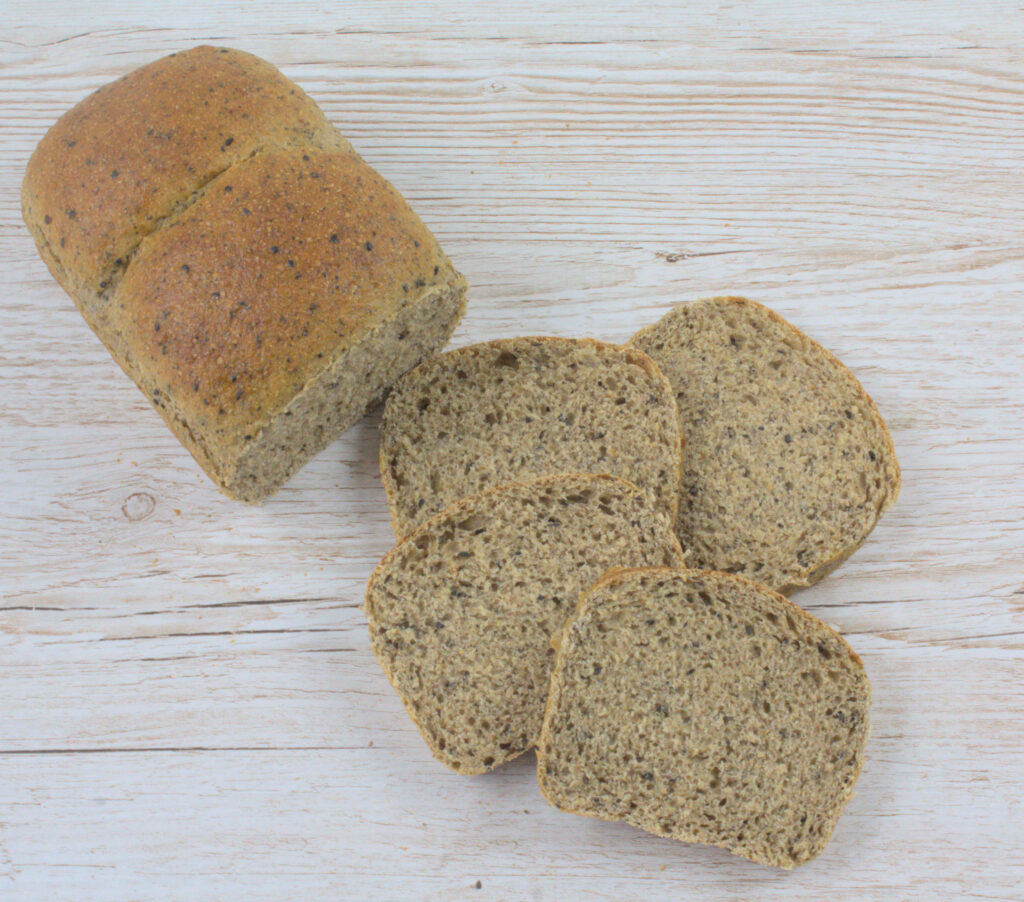
The Yudane method, revered for its ability to soften bread laden with heavier grains and seeds, became the cornerstone of my experimental baking over the past few weeks.
My journey began with the BBB Marbled Black Sesame Shokupan Yudane Bread, where the Yudane method proved its worth by seamlessly integrating a portion of whole wheat flour into the dough, creating loaves that were tender, not dense.
Inspired, I ventured further, pushing the boundaries of whole wheat content from 67% to a daring 100%, discovering with each loaf that the limits of whole wheat baking were meant to be challenged.
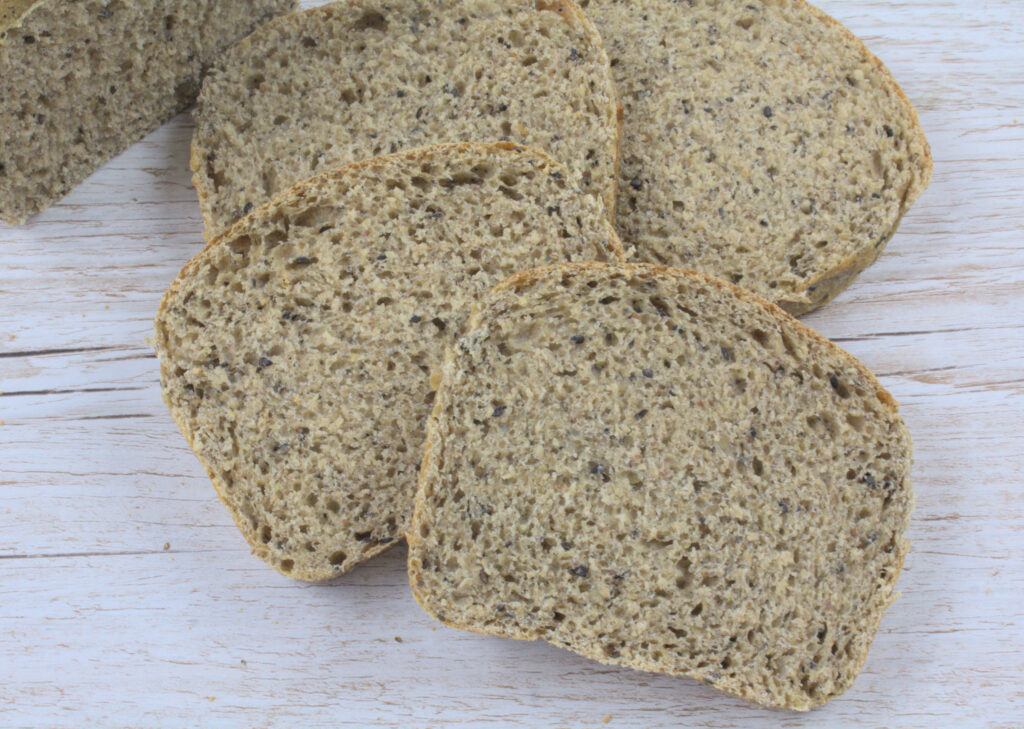
This bread, therefore, is not just a recipe; it’s a narrative of exploration and discovery. By swapping the marbled aesthetics and black sesame paste of my earlier experiments for the simplicity of toasted black sesame seeds and the wholesome goodness of ground flax seed meal, this creation marks a return to the basics—sourdough and whole grains.
The result is a bread that is as nutritious as it is delicious, a testament to the idea that sometimes, the simplest ingredients, when combined thoughtfully, can produce something truly extraordinary.
I invite you to join me on this journey of discovery and innovation. Learn how the synergy of sourdough fermentation and the Yudane method can elevate the humble whole wheat loaf to new heights, creating a bread that is not only nourishing but also a delight to the senses.
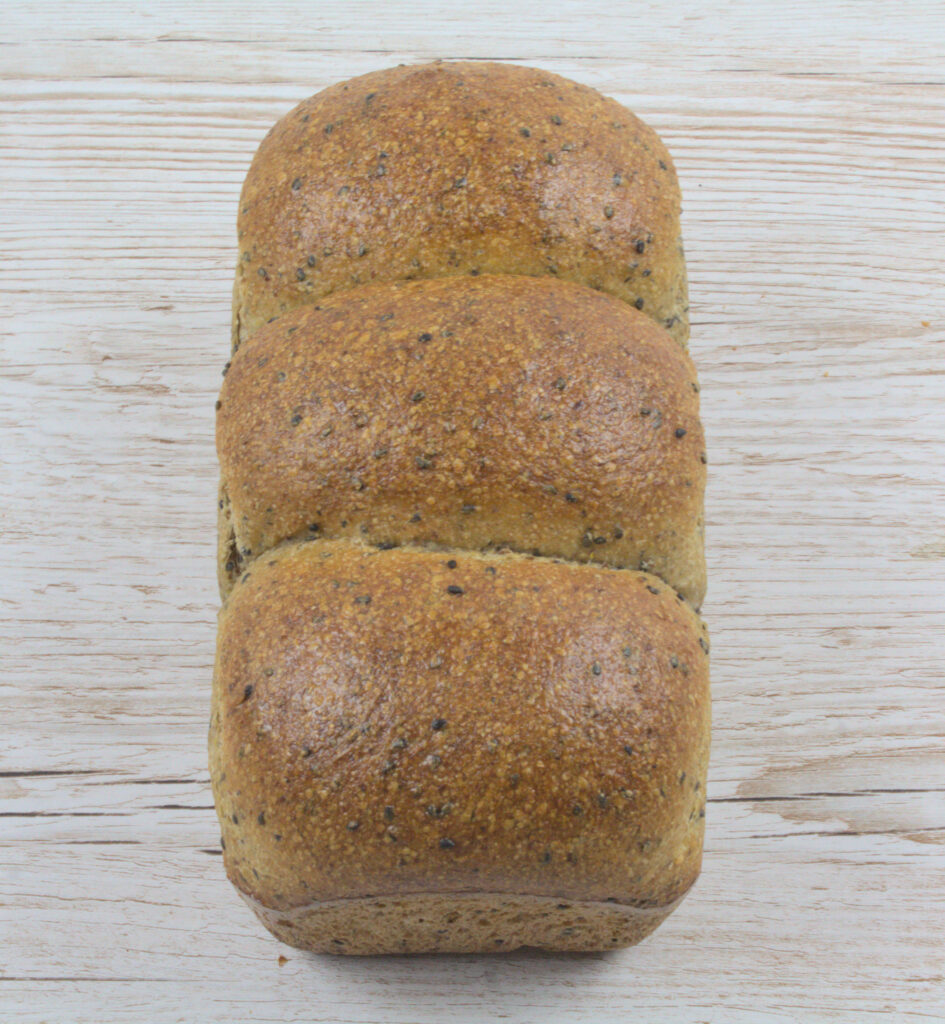
Why toast the black sesame seeds?
Toasting black sesame seeds before using them in bread can enhance their flavor and aroma significantly. When sesame seeds are toasted, the natural oils within the seeds become more pronounced, releasing a nutty and more intense flavor that can add a complex depth to the bread’s taste profile. This process also gives the seeds a crunchier texture, which can add an interesting contrast to the softness of the bread.
Additionally, toasting can improve the seeds’ digestibility and potentially increase the availability of some nutrients, as the heat can break down complex compounds. This can make the nutritional benefits of the sesame seeds, such as their high content of minerals, vitamins, and healthy fats, more accessible.
Incorporating toasted black sesame seeds into bread not only boosts the sensory qualities of the final product but also contributes to its nutritional value, making it a simple yet effective way to enhance both the flavor and healthfulness of homemade bread.
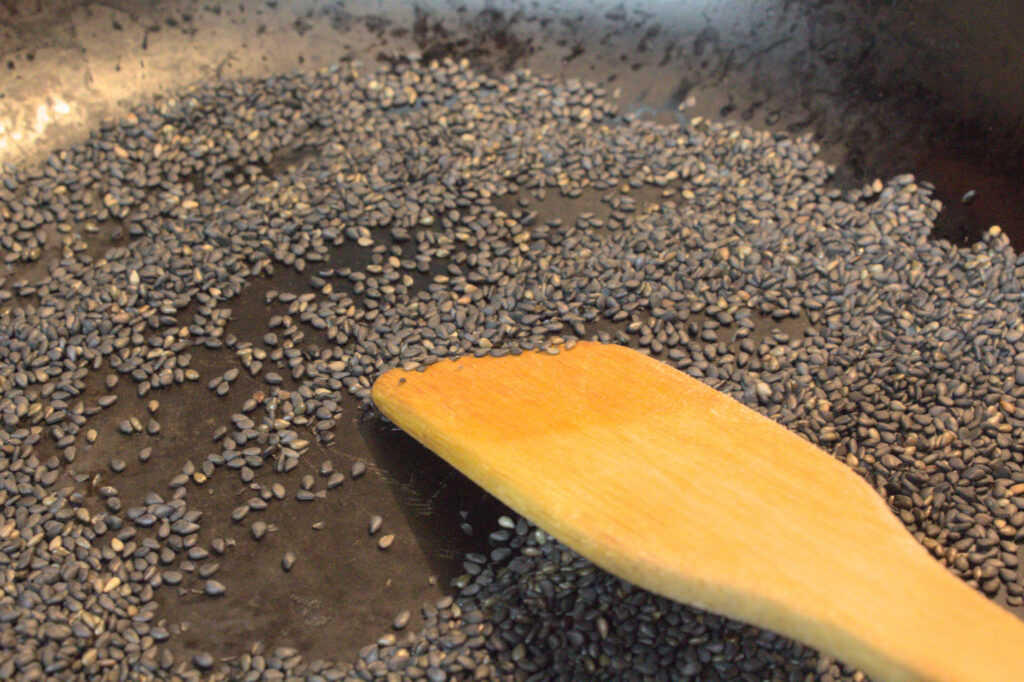
Interesting Facts on using ground flax seed in bread
Incorporating ground flax seeds into bread offers numerous benefits, both in terms of nutrition and the physical properties of the bread itself. Some of these benefits are:
Fiber – Ground flax seeds add both soluble and insoluble fiber to bread, aiding in digestion and promoting a feeling of fullness, which can be helpful for weight management.
Texture and Moisture – The addition of ground flax seeds can improve the moisture content of bread, leading to a softer texture and potentially extending shelf life.
Natural Preservative – The antioxidants in flax seeds, particularly lignans and other phenolic compounds, can act as natural preservatives, extending the freshness of bread by preventing oxidative rancidity.
Healthier Fat Profile – By adding flax seeds, the overall fat profile of bread can be improved, incorporating more unsaturated fats, which are healthier for the heart compared to saturated fats commonly found in baked goods.
Flavor and Appearance – Ground flax seeds have a nutty flavor that can enhance the overall taste of bread. They also add a unique texture and appearance, making the bread more appealing.
Why use ground flax seeds?
Ground flax seeds are preferred over whole flax seeds because grinding makes their nutrients more bioavailable, meaning the body can absorb and utilize these nutrients more effectively.
Photo Tutorial of Shaping the Yudane Loaf
- Yudane
- Divide dough into 3 pieces
- Loaf proofing in pan
- Brushed with egg wash
- Baked Loaf
- Loaf ready to enjoy
Notes on Sourdough Whole Wheat Black Sesame Yudane Bread:
- I experimented with adding varying amounts of toasted sesame seeds to this bread. Due to the amount of whole grain and the inclusion of ground flaxseed meal, I found that less is better. I recommend using no more than 2 tablespoons of sesame seeds.
- I also tested using toasted versus untoasted sesame seeds and crushed vs whole seeds. I prefer the flavor of toasted and lightly crushed black sesame seeds.
- I tried different types of finishes on the bread as well. I brushed melted butter on one loaf, milk on one loaf, and used an egg wash on the other ones. I prefer the egg wash for this loaf. The milk doesn’t provide enough color, and because this bread lasts longer on the counter, the butter has the potential to get moldy.
Enjoy as a pull-apart loaf or slice evenly for sandwiches
- Pull apart sections
- Slice evenly
You might enjoy one of these other breads made with sesame seeds:
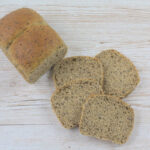
Sourdough Whole Wheat Black Sesame Yudane Bread
- Yield: 1 Loaf 1x
Description
This Sourdough Whole Wheat Black Sesame Yudane Bread marries the ancient traditions of sourdough fermentation and the Japanese Yudane method with the robust nutrition of home-milled white whole wheat flour
Ingredients
Yudane:
- 75g white whole wheat flour
- 85g boiling water
Levain:
- 20 grams sourdough starter
- 60 grams white whole wheat flour
- 60 grams water
Bread dough:
- Yudane, all of above
- Levain, all of above
- 240g white whole wheat flour
- 2 tbsp ground flaxseed
- 190g whole or 2% milk, cold (reserve 15g to add with salt)
- 2 tbsp + 3/4 tsp brown sugar
- 15g butter
- 2 tbsp (14g) toasted black sesame seeds, lightly crushed
- 1 1/8 tsp salt
Topping:
- egg wash (1 small egg + 1/2 tbsp water, beaten together)
Instructions
The day before:
Yudane:
- In a bowl, combine 75g white whole wheat flour and boiling water and mix well with spatula or spoon. Cover tightly and place in the fridge for at least 4 hours or overnight.
- The mixture will be stiff after mixing, and soft and pliable the next morning. Use directly from the fridge.
Levain:
- In a small bowl, combine the sourdough starter, water and flour. Mix thoroughly to combine.
- Cover and let the mixture rise at warm room temperature until doubled in size, about 8-12 hours, depending on the temperature in your kitchen.
Bake day:
- Remove the yudane dough from the refrigerator and into pieces. Combine with the levain, milk, flours, and flaxseed meal in the bowl of a stand mixer. Mix on low speed for 2 minutes to incorporate.
- Add the brown sugar and mix thoroughly. Add the butter and continue mixing for another 10 – 13 minutes or until the gluten is well developed and can be drawn out into a fairly transparent sheet (windowpane test).
- The dough should be slightly on the wet side due to the whole grains. Scrape down the dough from the hook periodically during the kneading process to ensure well distributed gluten development.
- Add the toasted sesame sesame seeds and mix thoroughly. Let the dough rest for 15 minutes.
- Sprinkle the salt over the top of the dough and add the remaining 15 grams of milk. Mix on low speed until the salt is evenly distributed throughout the dough.
- Cover, let the dough rest at warm room temperature. Check the dough after 45 minutes and stretch and fold if needed.
- Continue to check the dough every 45 minutes until the dough is doubled in size, about 3-4 hours, depending on the temperature in your kitchen.
- Divide the dough into 3 equal pieces and preshape lightly into rounds. Cover, let rest on the counter for 20 minutes.
- Shape the rounds into tighter boules and place side-by-side in a greased or parchment-lined 8 ½ x 4 ½-inch glass loaf pan.
- Cover, let the loaf proof in the pan at warm room temperature for 2-3 hours, or until doubled in size.
- While the loaf is rising, preheat the oven to 350 F (175 C). When the loaf has doubled, brush with egg wash.
- Bake the loaf for 30-35 minutes until golden and baked through (internal temperature should be at least 190 F.) Rotate the pan after 15 minutes for even baking.
- Cool in the pan 10 minutes. Remove the loaf from the pan and finish cooling on a wire rack completely before slicing and serving.
- Category: Japanese Milk Bread
Happy Baking!
Cathy
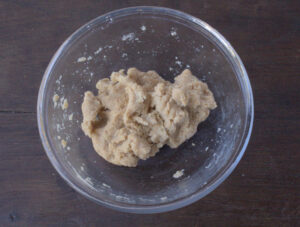
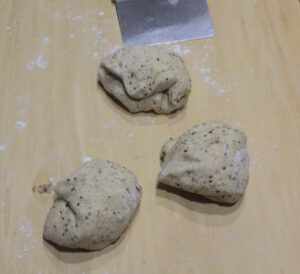
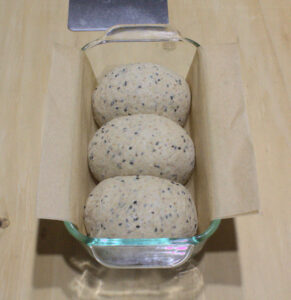
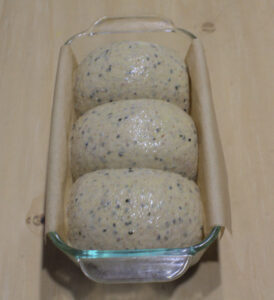
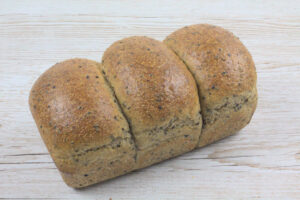
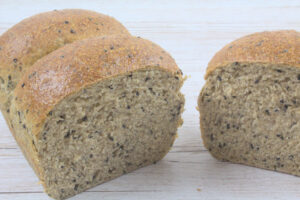
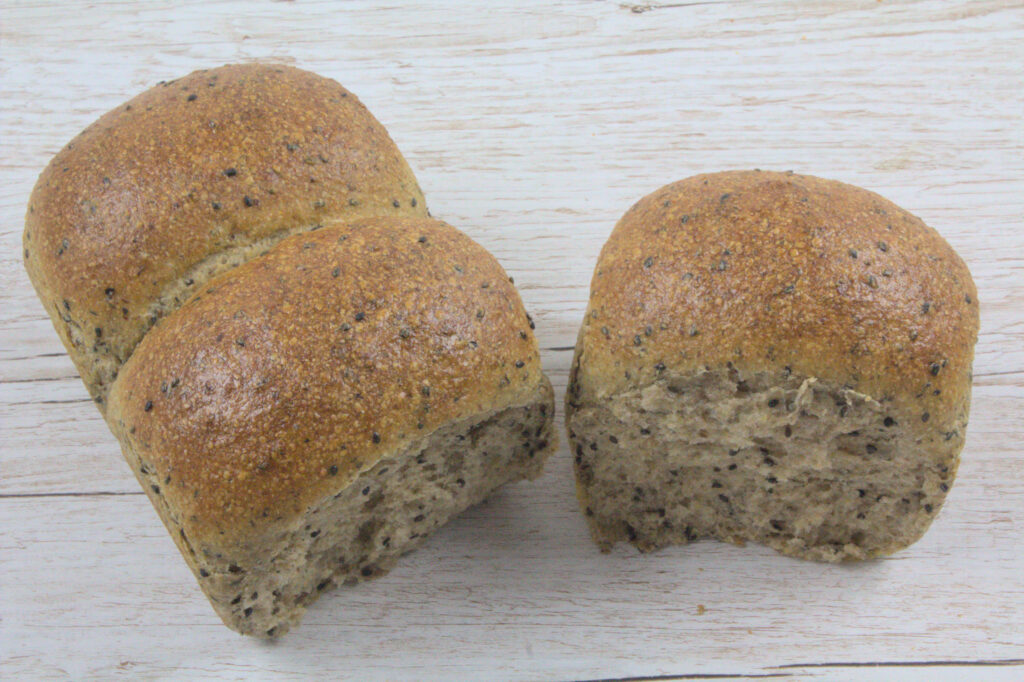
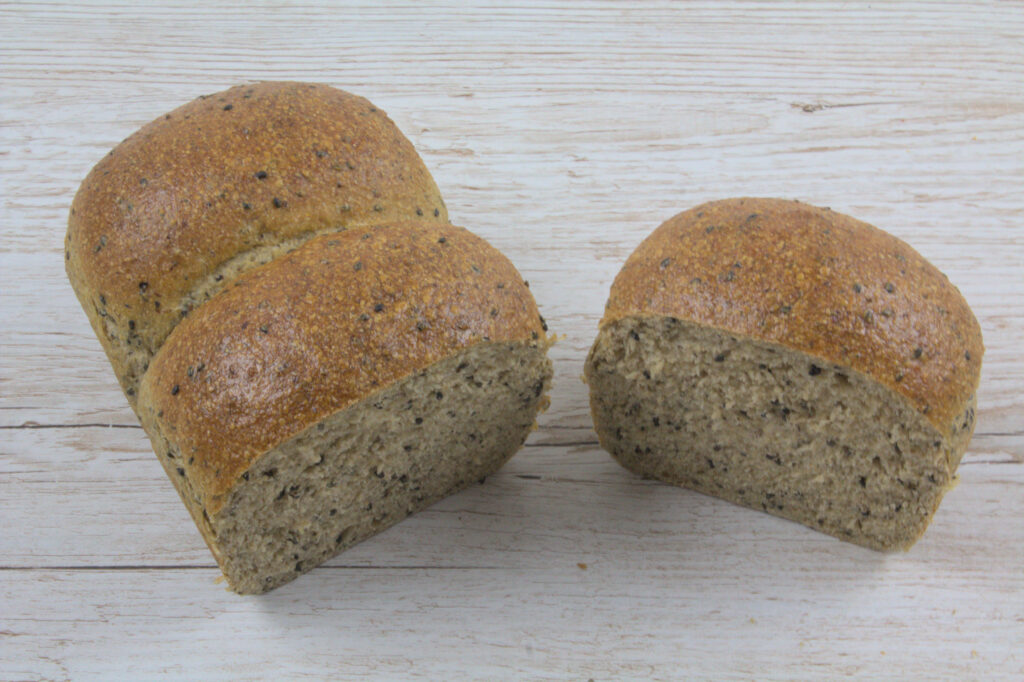
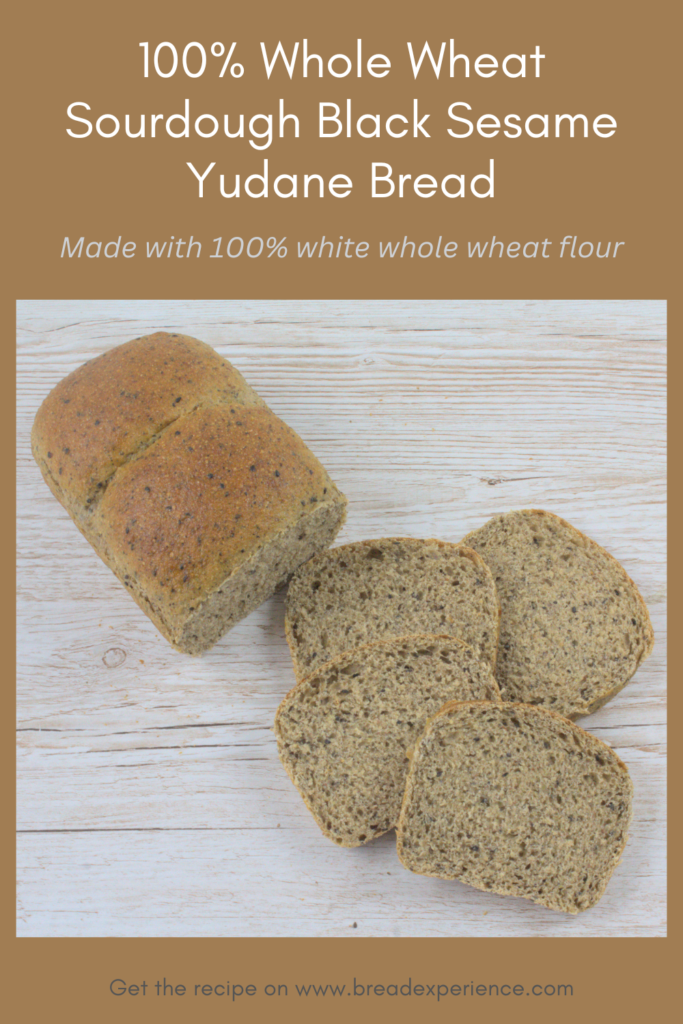
Kelly says
Absolutely gorgeous color. Did you have to increase the hydration much for the whole wheat? I need to go back and read closer.
Cathy says
Thanks Kelly!
I increased the hydration to about 90% total. The dough wasn’t hard to work with because the hydration is added gradually. Compared to your recipe, I used 25% more boiling water in the Yudane (85 grams vs 68 grams) and about 5% more milk in the final dough. The levain also contributed to the hydration. I loved working with the yudane.